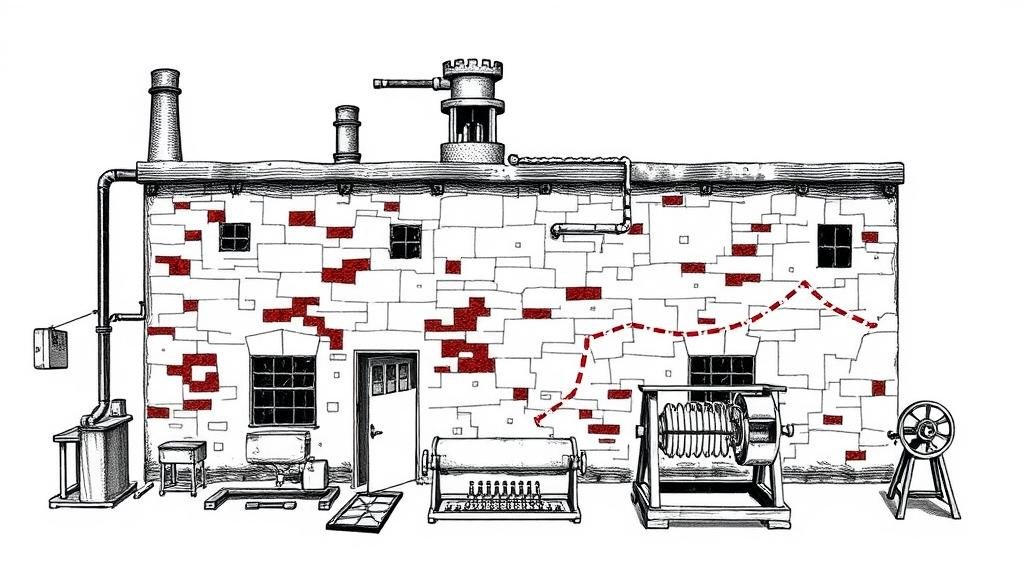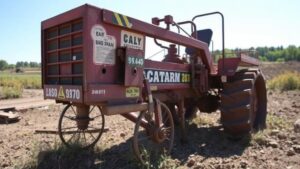Mapping Forgotten Textile Spinning Halls for Industrial Artifact Discoveries
Mapping Forgotten Textile Spinning Halls for Industrial Artifact Discoveries
The industrial revolution marked a pivotal turn in the history of textile manufacturing, particularly in the United Kingdom and the United States during the late 18th to early 19th centuries. The spinning halls, pivotal in textile production, housed advanced machinery that revolutionized fabric creation. But, many of these sites have been abandoned or forgotten, leading to a loss of valuable historical and cultural artifacts. This article explores methods for mapping these spinning halls, their significance, and the implications of rediscovering these industrial relics.
The Historical Context of Textile Spinning Halls
Textile spinning halls were essential to the mechanization of the textile industry. Spinning Jenny, developed by James Hargreaves in 1764, allowed workers to spin multiple spools of thread simultaneously, significantly boosting productivity. By the time the Water Frame was invented by Richard Arkwright in 1769, these spinning halls had become the backbone of textile manufacturing, especially in regions like Lancashire, England, which produced a majority of Britains cotton by the late 19th century.
Importance of Mapping Forgotten Halls
Mapping the locations of forgotten spinning halls serves multiple purposes:
- Cultural Heritage Preservation: Recognizing and cataloguing these sites helps preserve the industrial heritage and informs future generations about historical manufacturing processes.
- Archaeological Potential: Many of these sites may contain artifacts, remnants of machinery, and production materials that could yield insights into technological advancements and labor practices.
- Economic Revitalization: Redeveloping these structures can lead to economic opportunities through tourism and education, particularly by showcasing local history and technological progression.
Methodologies for Mapping
The methodologies for mapping the locations of forgotten textile spinning halls include both traditional archival research and modern geospatial techniques. Key strategies involve:
- Archival Research: Examining historical documents, local records, and industrial maps from the 18th and 19th centuries can pinpoint the original locations of spinning halls.
- Geospatial Technologies: Utilizing Geographic Information System (GIS) tools to analyze historical sites in relation to modern infrastructure helps visualize the changes over time.
- Community Engagement: Collaborations with local historians and community members can provide anecdotal evidence, leading to the discovery of sites that may not be well-documented.
Case Studies: Successful Discoveries
Several case studies demonstrate the successful mapping and rediscovery of spinning halls:
- The Whitworth Spinning Mill, Manchester: Discovered in 2003 through a combination of geospatial analysis and public records, this mill has been preserved as a historical site, allowing researchers to analyze the organization of labor in spinning.
- The Slack Mill, New Bedford, Massachusetts: A targeted community effort revived interest in this spinning hall, leading to archaeological excavations that uncovered vital artifacts dating back to the 1820s, offering a clear view into production techniques of the time.
Challenges in Preservation Efforts
Despite the potential benefits, mapping and preserving spinning halls face significant challenges:
- Funding Issues: Many preservation projects struggle with budgets that limit outreach and restoration activities.
- Urban Development Pressure: Rapid urbanization often leads to the demolition of historical sites, making preservation more difficult.
- Public Awareness: Low engagement from communities regarding the importance of these sites hinders preservation efforts.
Significance of Rediscovered Artifacts
Rediscovered artifacts from spinning halls provide a wealth of knowledge about industrial practices. For example, documents reflecting operational procedures can elucidate labor conditions, while machinery remnants can help us understand technological advancements. These insights not only document the past but also inform current conversations about manufacturing practices and labor rights.
Actionable Takeaways
To wrap up, mapping forgotten textile spinning halls is integral to preserving industrial heritage and understanding historical practices. Key takeaways include:
- Engaging local communities in the discovery process fosters interest and generates support for preservation.
- Utilizing comprehensive mapping techniques can yield a more holistic understanding of industrial landscapes.
- Promoting public awareness through educational programs can enhance the preservation efforts of industrial artifacts.
Conducting these efforts lays the groundwork for future explorations into our industrial past, ensuring that the legacy of textile spinning halls is not forgotten, but rather celebrated and studied for generations to come.



